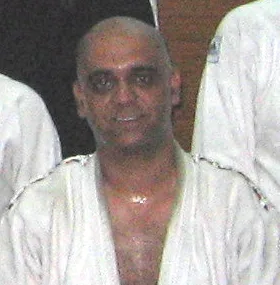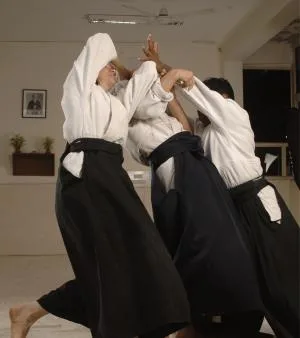1. Faster Reaction
Recently I was driving home from the aikido class. It was dark. Suddenly the car to my left abruptly swerved, almost “jumped” towards my car. The driver of this car did to avoid an accident – when he was just about to pass a stationary vehicle, its door suddenly opened. Thankfully, I also reacted immediately by “jumping” to the left. I am so grateful to my Aikido training for my fast reaction in this incident.
2. A State of Alert Relaxation
In Aikido you learn to consciously keep your body and mind relaxed. When you are relaxed, you are fast and precise in whatever you do. When your body is tense, you become erratic and prone to injury.
3. Falling Correctly
When you fall on the mat 20-30 times during a practice, 7 days a week, 356 days a year, for several years, your body’s response to a fall becomes automatic. Knowing how to fall correctly saved me from injuries at home and on the street on several occasions.
In our dojo we had a student who was a respected martial artist. One day, while driving a motorcycle, he was his hit by a car from behind. The force of the impact propelled him forward but he was able to do an ukemi in the air and landed on his hands, thus saving his head.
4. Peaceful Mind
Learning a martial art gives you peace of mind, the inner confidence that you can protect yourself in case of a need. Normally, knowledge of a martial art does not make a person aggressive. It removes the fear of facing an aggressive person. If a “situation” arises, you need not fight, you may just run away, but you will do it in conscious awareness, without panic.
5. Discipline and Etiquette
Japanese martial arts are famous for their ceremonial etiquette and for the discipline they instill in a student. It gives certain unmistakable grace and dignity to a person, which is rare to find in our “fast everything” times.
6. Good Friends
It seems Aikido attracts certain type of people. They are “intelligentsia” of they martial art world – not “brainless, fight-happy” guys and gals. Aikido is tough, out of hundred newcomers only few students will continue to practice, but whoever stays on, are “good people”.
7. Physical Fitness
It goes without saying that a fit body makes you feel good about yourself.
8. Weapons Training
It may have no practical value, but knowing how to handle the traditional Japanese sword, tanto (knife) and staff is COOL.
Yulia Pal. September 2008. karuna@pranichealing-delhi.com





